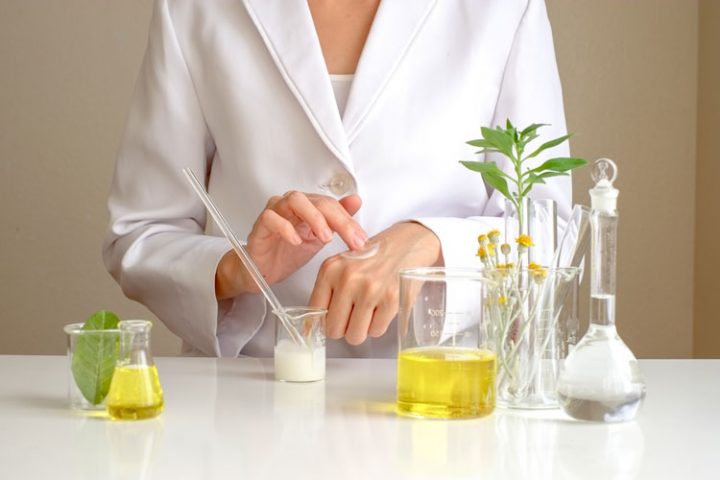One of AlumierMD’s hero ingredients is Hinokitiol this ingredient is used across the range of AlumierMD products due to its effectiveness in reducing redness and healing.
Hinokitiol, otherwise known as Beta-Thujaplicin, is an organic compound extracted from the oils of the western red cedar tree. It was discovered in the 1930s by First Nations people, and used for medicinal purposes. Hinokitiol is a superpower ingredient that has anti-inflammatory, antioxidant, antibacterial, anti-fungal and anti-melanogenic properties. Best of all, hinokitiol is as gentle as it is powerful. Hinokitiol’s properties allow it to target the inflammatory redness and blemishes seen in rosacea and acne. Hinokitiol is effective against P. acnes bacteria, and there is no known acquired resistance to it, unlike other prescription antibiotics. An in-vitro study published in the Journal of Microbiology showed that beta-thujaplicin is a broad-spectrum antibacterial compound. It is bacteriostatic for gram-positive and gram-negative species. It is also bactericidal for a number of gram negative bacteria in concentrations greater than 100 pg/ml.
Hinokitiol is also an excellent anti-aging ingredient. Because it is an antioxidant, it quenches free radicals from UV rays, pollution and inflammatory processes to limit the skin damage these elements can cause. An in-vitro study using mouse keratinocytes showed that beta-thujaplicin inhibits UVB apoptosis in keratinocytes and strongly suggests that the inhibitory mechanism is due to the antioxidant activity of metallothionein induced by the agent. Metallothionein is a powerful antioxidant that the body produces.
In an in-vitro study of human corneal epithelial cells published in the journal Eye, hinokitiol showed a remarkable anti-inflammatory effect and decreased the expression of proinflammatory cytokines. Hinokitiol also reduces the formation of pigment by inhibiting the enzyme tyrosinase, making it effective for treating hyperpigmentation. Hinokitiol has been studied for decades, and there are more than 100 scientific articles on its biological effects.
